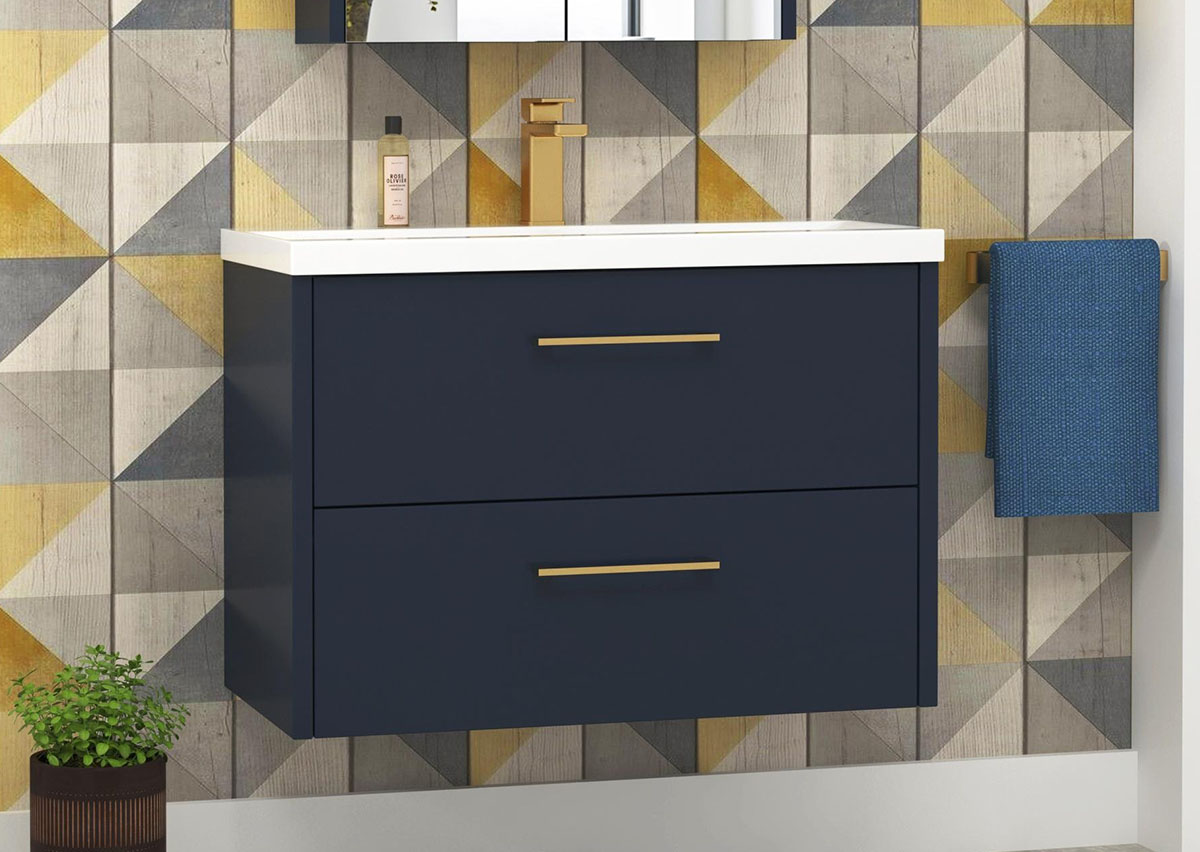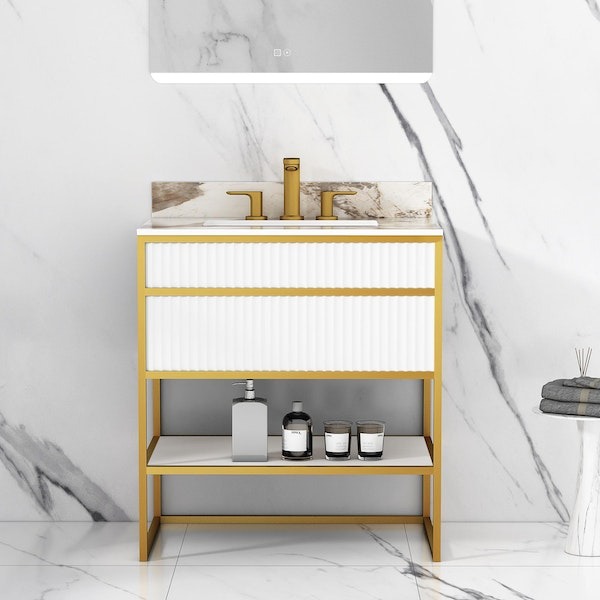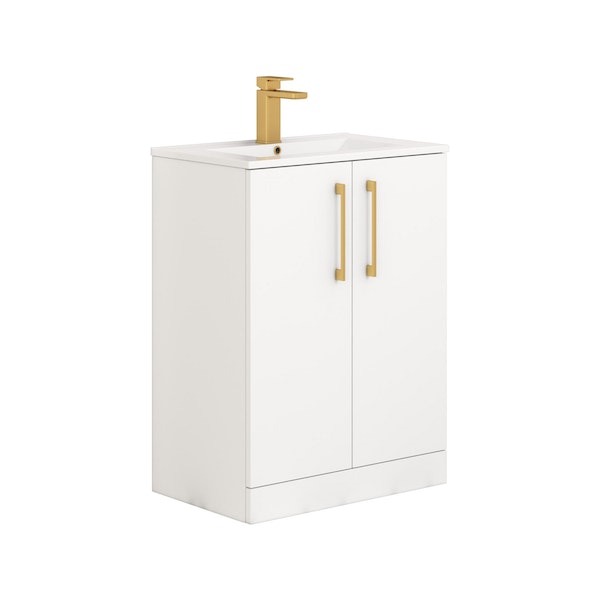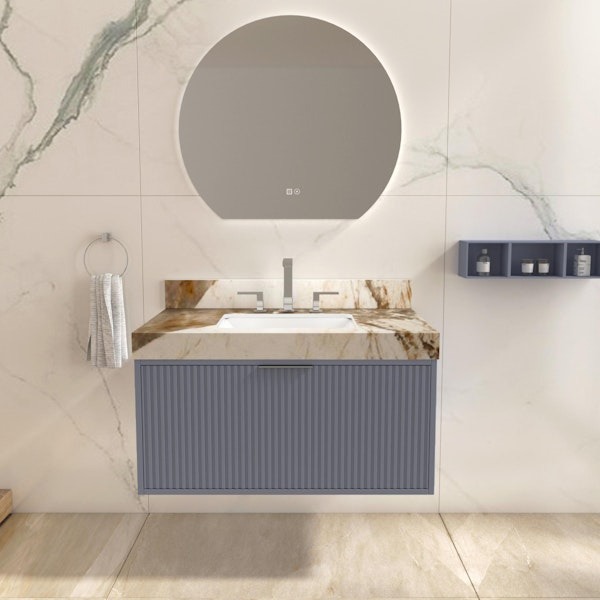
A vanity unit is a great addition to any bathroom, providing both storage and style. However, installing one yourself can be daunting, especially if you're new to DIY. In this vanity unit installation guide, we'll provide clear and easy-to-follow instructions for installing different types of bathroom vanity units, including wall-hung and floor standing vanity units. Whether you're a seasoned DIYer or a beginner, this guide will give you the confidence to tackle this project and create the bathroom of your dreams.
Tools and Materials Needed for Vanity Unit Installation
Before you start, it’s vital to make sure that you have all the essential tools and materials readily available. Missing any crucial items required for the installation could lead to potential delays and complications. Here's a list of tools that you'll need to have for a successful DIY installation.
Tools:
- Power drill
- Drill bits
- Hole saw
- Spirit level
- Measuring tape
- Pencil
- Adjustable wrench
- Pipe wrench
- Screwdriver set.
- Utility knife
- Silicone caulking gun
- Hammer
Materials:
- Vanity unit with a sink
- Faucet (you will usually need to order them separately)
- Drain (order them separately)
- PVC drainpipe
- PVC pipe cement
- Plumber’s putty
- Teflon tape
- Screws and wall anchors
- Silicone sealant
- Shims (if necessary)
- Cleaning Material
The installation process for a vanity unit can vary depending on the type of unit and the location where it will be installed. To ensure a successful installation, it is crucial to carefully read and follow the manufacturer's installation instructions. These instructions will provide you with the necessary information on the tools and materials required for the specific unit you are installing.


Vanity Unit Installation: Choosing the Perfect Unit
A vanity unit is an essential part of a functional and visually appealing bathroom. However, it is crucial that you choose the right option. You will need to consider various factors such as size, type, and style to select a vanity unit that meets your storage requirements and complements the overall aesthetics of the bathroom.
Step by Step Vanity Unit Installation Guide
Here we have easy-to-follow steps for installing wall-hung and floor-standing bathroom vanity units.
Installation Guide for a Wall Hung Vanity Unit:
- Measure and mark the position on the wall where you want to install the vanity unit: Measure the height and width of the vanity unit and use a pencil to mark the position on the wall where you want it to be installed. Make sure the mark is level and centred in the space where you want to install the unit.
- Locate the studs in the wall using a stud finder: A stud finder is a handheld tool that detects studs and other framing members behind the wall. Use the stud finder to locate the studs in the wall where you want to install the vanity unit. Mark the location of the studs with a pencil.
- Position the mounting bracket provided with the unit onto the wall where the vanity will hang: Attach the mounting bracket to the wall, using the marks made in Step 1 and the locations of the studs found in Step 2 as a guide.
- Drill pilot holes into the wall studs where the mounting bracket will be installed: Use a drill and appropriate drill bit to make pilot holes in the wall studs where the mounting bracket will be installed. The drill bit's size will depend on the screws that come with the mounting bracket.
- Secure the mounting bracket to the wall using screws: Use the screws provided with the mounting bracket to secure the bracket to the wall. Make sure the screws are tight and flush with the wall.
- Hang the vanity onto the mounting bracket, ensuring it is level and secure: With the help of an assistant, lift the vanity unit and align the hooks on the back of the unit with the mounting bracket. Carefully lower the unit onto the bracket, making sure it is level and secure.
- Connect the plumbing and drainage to the unit: Once the wall hung vanity unit is securely mounted, connect the plumbing and drainage. This may involve connecting water supply lines, drainpipes, and any other necessary connections. Be sure to follow the manufacturer's instructions and use appropriate tools to ensure a proper connection.


Installation Guide for A Floor Standing Vanity Unit:
- Measure and mark the position on the floor where you want to install the Vanity Unit
Measure the height and width of the vanity unit and use a pencil to mark the position on the floor where you want it to be installed. Make sure the mark is level and centred in the space where you want to install the unit. - Assemble the unit according to the manufacturer's instructions
Follow the instructions provided with the vanity unit to assemble it before installation. - Position the vanity in place and check that it is level
Once the vanity is assembled, carefully place it in the position marked in Step 1. Use a level to check that the unit is level from side to side and front to back. If the unit is not level, adjust its position until it is. - Mark the position of the base of the unit on the floor
Use a pencil to mark the location of the base of the unit on the floor. - Remove the vanity and drill pilot holes in the marked positions
Remove the vanity from the space and use a drill and appropriate drill bit to make pilot holes in the floor where the vanity will be anchored. - Place anchors into the holes and screw the unit's base to the floor
Insert anchors into the pilot holes and use screws to attach the vanity's base to the floor. Make sure the screws are tight and flush with the floor. - Reposition the vanity onto the base
With the help of an assistant, carefully lift the vanity and place it onto the base. Adjust the position of the vanity until it is level and secure. - Connect the plumbing and drainage to the unit
Once the floor-standing vanity unit securely fits into the position, you can connect the plumbing and drainage. This may involve connecting water supply lines, drainpipes, and any other necessary connections. Be sure to follow the manufacturer's instructions and use appropriate tools to ensure a proper connection.


Tips for a Successful Vanity Unit Installation
Here we share some expert tips to help you ensure a successful vanity unit installation process.
- Measure Twice, and Cut Once!
If you need to make any cuts or adjustments to the bathroom vanity unit, then double-check your measurements to ensure that everything fits perfectly. - Use the Right Tools
DIY vanity installation will require knowledge and experience in using various plumbing tools. Use of the wrong tool or technique may be damaging to the vanity unit. - Follow the Manufacturer's Instructions
Always read and follow the manufacturer's instructions for installation. This will ensure the correct and smooth installation of the vanity unit. - Check for Levelness
Use the spirit level to ensure that the vanity is levelled horizontally and vertically. This is critical for ensuring proper functionality and preventing water damage. - Allow Proper Ventilation
Although vanity units have moist-resistant material, continuous exposure to higher humidity levels can lead to mould and mildew growth. Therefore, it is important to ensure adequate ventilation in the bathroom to prevent damage. - Use a Silicone Sealant
Apply a bead of silicone sealant around the edges of the vanity unit to create a waterproof seal and prevent water damage.
Hiring a Professional vs. DIY Vanity Unit Installation
This section discusses the pros and cons of hiring a professional for bathroom installation vs. do-it-yourself vanity installation. This comparison will help you make an informed decision based on factors such as cost, time, expertise, quality, and warranty.
| Factors | Hiring a Professional | DIY Vanity Unit Installation |
|---|---|---|
| Cost | Higher upfront costs due to labour charges | Lower upfront cost, as you only need to buy materials and tools |
| Time | Quicker installation since professionals have experience and proper equipment | May take longer, especially for inexperienced DIYers or complex installations |
| Expertise | Professionals have the necessary skills and knowledge to handle any installation challenges | DIYers may encounter unexpected issues and may require additional research or assistance |
| Quality | High-quality installation is more likely due to professional expertise | Quality may vary depending on DIYer's skill level and attention to detail |
| Warranty and Support | Professional installation often comes with a warranty and after-sales support | DIY installation may not have a warranty or support, and any issues may need to be resolved independently |
Vanity Unit Maintenance and Care
Cleaning and maintenance are important to ensure the longevity of your vanity unit and to preserve its look. Here are a few bathroom vanity installation tips to use when caring for your unit.
- Regular Cleaning: Clean the vanity unit surface with mild detergent a couple of times a week. To prevent scratches, never use an abrasive cleaner. If stains are tough, consider using an effective non-abrasive cleaner.
- Avoid Harsh Chemicals: Make sure you don't use harsh chemicals or bleach on your vanity unit. These chemicals can cause discolouration and damage to the surface of the unit
- Wipe Up Spills Immediately: Stains should be cleaned up immediately after spills to prevent them from setting in. Use a soft cloth and mild detergent to clean up spills.
- Avoid Scratching the Surface: Vanity units are vulnerable to scratches if you use abrasive sponges or brushes. Therefore, use a soft cloth or non-abrasive sponge instead.
- Proper Drain Maintenance: To prevent clogs and blockages, regularly clean and maintain the drain on your vanity unit. You can use a drain cleaner or plunger to remove any debris or buildup in the drain.
- Regular Inspection: Be sure to inspect your vanity unit for any signs of damage or wear and tear regularly. Any issues should be addressed promptly to avoid possible damage.
Following these guidelines for maintaining and caring for your vanity unit can ensure its longevity and preserve its appearance.


Troubleshooting Common Vanity Unit Installation Issues
DIY installation can be challenging for someone who is not familiar with basic plumbing. Here we have discussed a few common issues that may arise during bathroom cabinet installation and some solutions to help you overcome them.
- Uneven Floors
An uneven floor can cause the vanity unit to wobble or tilt. This problem can be solved by adding shims to the unit. These are small pieces of wood or plastic that you can place under the legs of the floor-standing vanity unit to level it. - Plumbing Problems
Plumbing problems are one of the most common challenges during vanity installations. It can be difficult to connect the water supply and drain properly if you are not familiar with plumbing work. Therefore, you may want to hire a professional plumber to assist you with this aspect of the installation. - Incorrect Measurements
It is possible to run into a lot of problems during the installation of vanity units if measurements are incorrect. Therefore, you should measure the space accurately before installing the vanity unit. In addition, don’t forget to take into account any obstructions, such as pipes and electrical wires. - Wall Anchors
If you are installing a wall-mounted vanity unit, wall anchors are necessary to secure them to the wall. You must follow the manufacturer's instructions carefully and choose the right size and type of wall anchors to use with your vanity unit. - Cabinet Doors and Drawers Not Closing Properly
If your vanity unit's cabinet doors or drawers don't close properly, the unit may be unlevel, or the hardware may not be installed correctly. You can resolve this issue by checking the level of the unit and adjusting the hardware as necessary.
We have discussed the common challenges that may arise during a vanity unit installation. However, if you encounter any issues that you are unable to fix on your own, don’t hesitate to consult with a professional plumber.
Conclusion
While installing a new bathroom vanity unit is typically a task for professional plumbers, following our step-by-step guide can help ensure a successful DIY installation. However, before considering a DIY approach, weighing the pros and cons of each installation option is important. By doing so, you can make an informed decision that fits your budget, timeline, and skill level.
